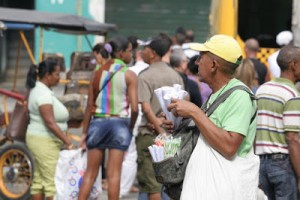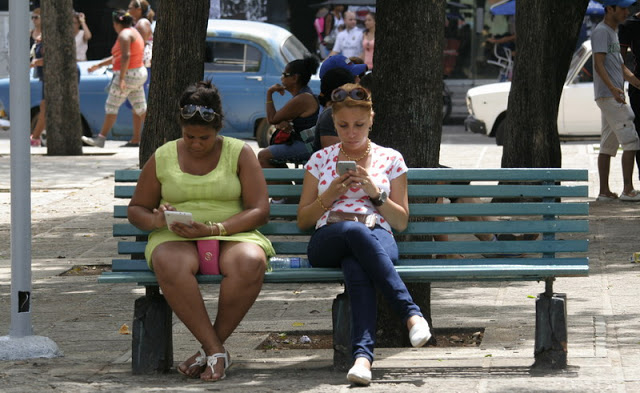Hablemos Press, Elio Delgado, Havana, 9 September 2015—San Rafael Boulevard is an old street filled with large stores in the historically most commercial zone of the Cuban capital. One can still recall the run-up to Three Kings Day and the toys purveyed for purchase in the currency that our parents used, which at that time was a strong currency. Today all that remains are the old stores that sell the worst products in the devalued currency that we are paid so that we can acquire them, in addition to some other poorly-stocked establishments that take only hard currency.
The images that accompany this article are taken on the streets of what used to be this prosperous commercial boulevard. At present, what is peddled most are black market items, which range from eyeglasses to a girl or boy equipped for rented sex. These are the most-sought offers, because there is nothing to buy in the stores, or there is no money to do so. continue reading
After hearing the president say that there would not be any change in the currency nor increased wages, and that “with calm, so that we do not err” there is some possible change being considered, we began the year 2015 with no hopes.
 In January, the governments of the United States and Cuba began their talks. But ours is an imposed government. How will it negotiate on our behalf if it is not representing all the social classes of the country?
In January, the governments of the United States and Cuba began their talks. But ours is an imposed government. How will it negotiate on our behalf if it is not representing all the social classes of the country?
Following are some of the many comments that this paradox elicits on the streets.
“What will this government use for money to pay the yumas (Americans) for what they send over?”
“If the American farmers send products in large quantities, what will the Cuban government do about the scandalous prices that they affix to their own products?”
“The time is near. What will they do with ships full of products?”
“You watch; the same will happen as did with the Russians: they [the Cuban government] preferred for things to go bad in the warehouses rather than sell them at lower prices.”
“Who cares whether the people will crawl out of the misery in which they live?”
“What will happen if people have the chance to go on the Internet and see the reality of other countries?”
In the taxi cabs, passengers tell the drivers to enjoy it while they can, because new-car sales will soon be allowed. The drivers laugh and reply, “Dream on! You don’t matter to anybody.”
Some elderly people have told me that they hope to live to see Cuba as it was in the 1950s; that the deception [perpetrated by the regime] is criminal.
Last 24 December, an older gentleman confided that he would not like to leave this world without once more tasting a picadillo made of beef with olives, capers and raisins, like his mother used to make. Even more than granting such a simple wish, would that a group of bureaucrats would leave the government that they hold by force.
“Work, so that you’ll have more!” said the Cuban general-president. And I ask myself, “More…of what?”
Translated by: Alicia Barraqué Ellison

